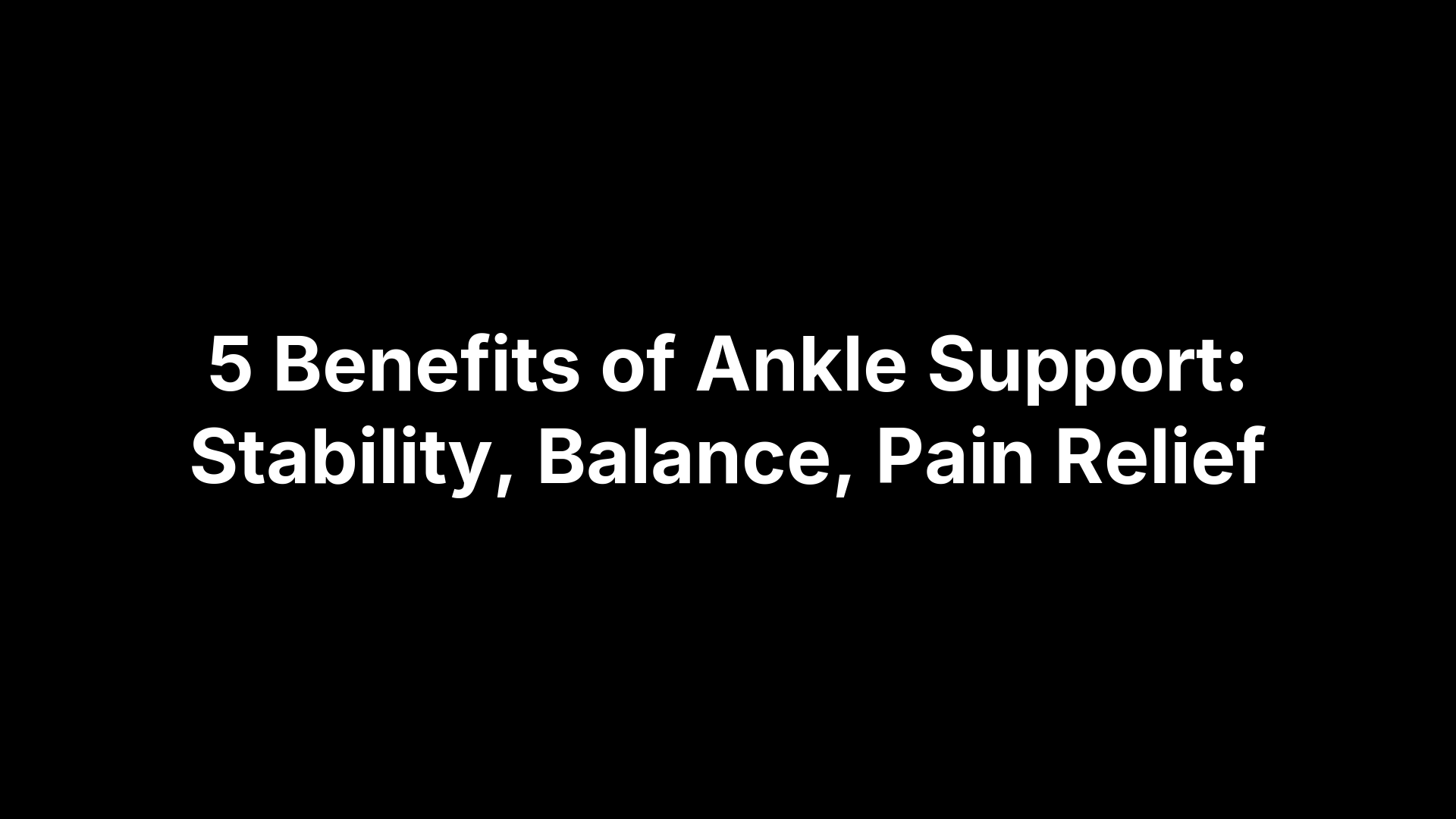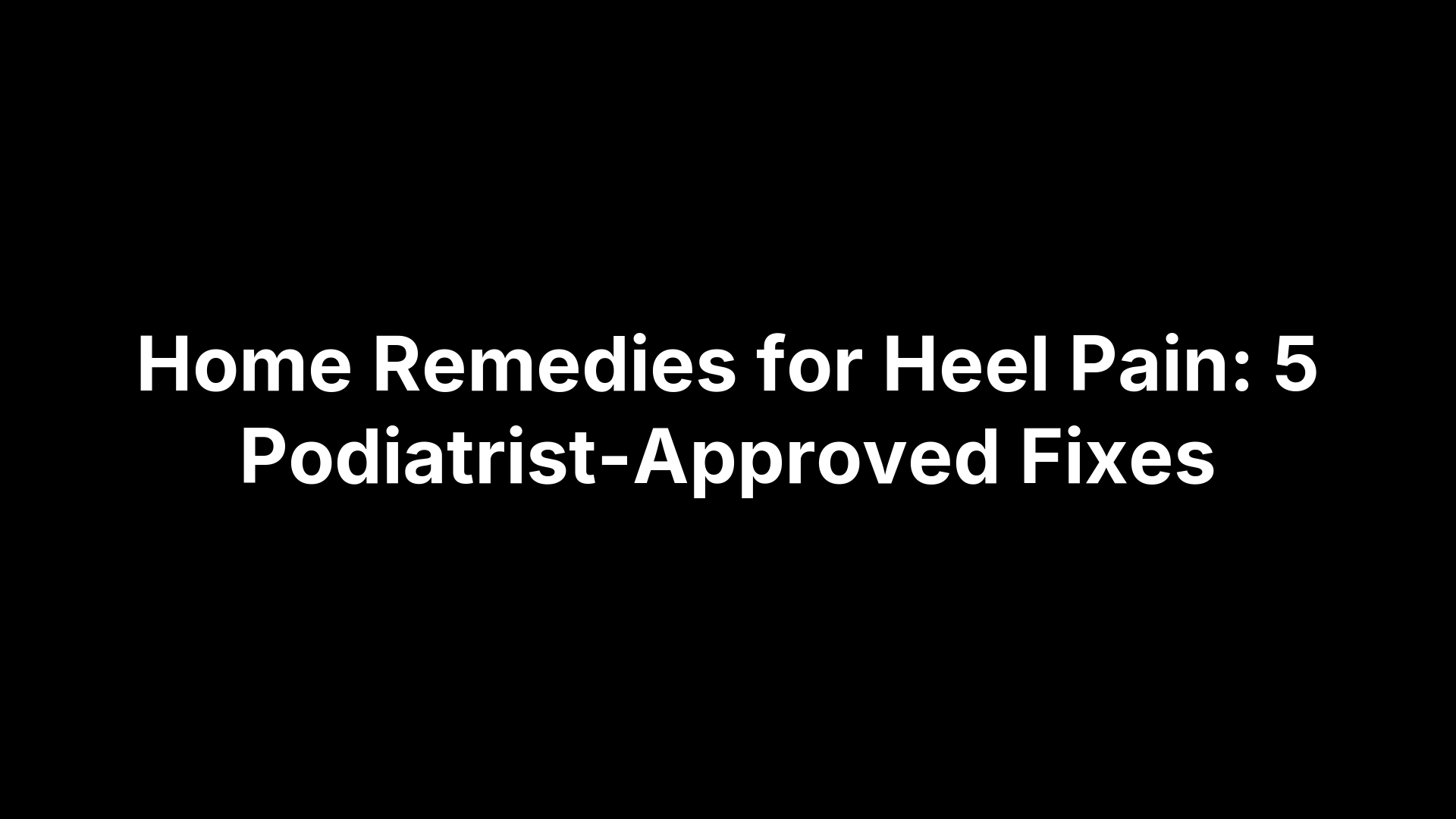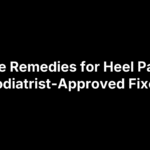Conservative treatment is the medical term for handling an injury or illness without cutting into the body. Think physical therapy instead of surgery, custom orthotics instead of joint replacement, or antibiotics instead of an immediate appendectomy. The aim is to calm pain, jump-start healing, and keep your original anatomy intact while saving you from many of the risks, costs, and recovery days tied to the operating room.
Most clinicians use a “step-up” model: begin with non-invasive care, escalate only when symptoms refuse to budge or emergencies arise. The same logic suits foot and ankle sprains, disc bulges, even some early cancers because it keeps later options open.
In the sections ahead you’ll learn how conservative care stacks up against surgery, how doctors decide, and eight evidence-backed strategies—PT, medication, bracing, injections, lifestyle tweaks, complementary methods, watchful waiting, and advanced tech—you can discuss with your provider.
Conservative Treatment at a Glance: Definition and Core Principles
Ask any medical textbook what is conservative treatment and you’ll read something like this: a deliberately non-surgical, non-invasive (or only minimally invasive) strategy that seeks to relieve symptoms, promote tissue healing, and preserve normal anatomy before an operation is even considered. Put differently, it’s healthcare’s “fix it without the scalpel first” philosophy.
Four core principles guide that philosophy:
- Tissue preservation – protect muscles, tendons, nerves, and joints from irreversible change.
- Risk reduction – sidestep anesthesia complications, infection, and long downtimes.
- Cost-effectiveness – fewer hospital bills and faster returns to work or play.
- Patient empowerment – you play an active role through exercise, education, and lifestyle tweaks rather than lying passively on an OR table.
Key Characteristics Readers Should Know
- Non-invasive or minimally invasive (no large incisions, rare general anesthesia)
- Progress is gradual and measurable over weeks to months
- Flexible mix-and-match: therapies can be intensified, combined, or dialed back as results dictate
Conservative vs. Surgical Care: Understanding the Main Differences
Choosing between “fix it without a scalpel” and “open it up” boils down to goals, risk tolerance, and urgency. The comparison table below sums up how the two paths diverge.
| Factor | Conservative Care | Surgical Care |
|---|---|---|
| Approach | Exercise, medications, external supports | Incision, hardware, anesthesia |
| Primary goal | Symptom control, tissue preservation | Structural correction, definitive fix |
| Recovery time | Days–weeks | Weeks–months |
| Major risks | Medication effects, minor flare-ups | Infection, anesthesia, revision surgery |
| Average cost | Lower, mostly outpatient | Higher, hospital & OR fees |
| Used when | First-line for stable cases | Emergencies or failed conservative |
Plain-language answer to the PAA question “What is the difference?”
- Conservative = non-invasive (ice, PT, braces)
- Surgical = invasive (incisions, implants)
- Most patients try conservative first and advance only if it fails or red flags appear.
Benefits That Make Conservative Care Attractive
Lower complication rates, smaller bills, and less downtime mean you’re back to work or the gym sooner. Because you steer much of the program—stretching, lifestyle tweaks—it nurtures long-term self-management and satisfies most insurers’ “try this first” requirement.
Situations Where Surgery Becomes Necessary
Operating rooms enter the chat when nerves lose function, infections threaten tissue, deformities progress, or pain lingers beyond roughly three to six months of diligent conservative care. Patient preference also matters: some folks opt for a one-and-done fix once risks are clear.
Deciding Whether Conservative Management Is Right for You
The call to go conservative—or skip straight to the OR—hinges on a handful of practical questions your doctor will walk through with you. First comes an accurate diagnosis: a mild plantar fasciitis responds differently than a ruptured tendon. Next, severity and lifestyle: a warehouse worker on her feet eight hours a day may tolerate pain less than a desk-based accountant. Comorbidities such as diabetes, heart disease, or smoking status influence healing speed and complication risk, while personal goals (running a 10K vs. simply sleeping without pain) set the bar for success. Finally, shared decision-making ties it all together. Your provider should outline options, success odds, and timelines so you can weigh benefit against hassle before settling on a plan.
Conditions Commonly Managed Conservatively
-
Orthopedic
- Plantar fasciitis (up to 90 % improve with stretching, night splints, and orthotics)
- Grade I–II ankle sprains
- Knee or hip osteoarthritis in early stages
- Lumbar disc bulges without motor loss
-
Non-orthopedic
- Uncomplicated appendicitis treated with antibiotics
- Early prostate cancer under active surveillance
- Mild carpal tunnel syndrome managed with splints and activity changes
These examples show how wide the conservative toolbox really is.
How Long to Try Conservative Care Before Reassessing
Most protocols give a defined “trial window.” For musculoskeletal problems, that’s often 6–12 weeks of physical therapy or bracing, paired with periodic pain and function scores (e.g., VAS ≤ 3/10 or walking tolerance > 30 minutes). Medications might be reviewed after 2–4 weeks to check for side effects or progress. If pain worsens, sensation changes, fever appears, or imaging shows structural collapse, escalate sooner. Otherwise, expect a formal re-evaluation around the three-month mark to decide whether to continue, tweak, or pivot to surgical consult.
#1 Physical Therapy and Therapeutic Exercise
Physical therapy (PT) is the workhorse of conservative care, using hands-on techniques and targeted exercise to restore strength, flexibility, and joint control while retraining your brain’s sense of body position (proprioception). A therapist may mobilize stiff ankle joints, cue proper gait mechanics, or prescribe core work that unloads the lumbar spine. Meta-analyses show PT cuts plantar-fascia pain by 60 %, rivals surgery for rotator-cuff tendinopathy, and shortens recovery after knee arthritis flare-ups.
Sample 4-Week Home Progression
| Week | Key Exercise | Sets x Reps |
|---|---|---|
| 1 | Seated towel scrunches | 3 × 15 |
| 2 | Calf stretch on wall | 3 × 30 sec |
| 3 | Single-leg balance | 3 × 45 sec |
| 4 | Heel raises off step | 3 × 12 |
What to Expect in a PT Program
First visit: history, movement screen, and goal setting. Typical schedule is 2–3 sessions per week with re-checks every 4–6 weeks. Therapists may layer in heat packs, ice, ultrasound, or electrical stimulation to calm pain and prep tissues for exercise.
Tips to Maximize Results
- Do your home exercises—consistency trumps intensity
- Wear supportive shoes or orthotics during activity
- Log pain scores and mobility gains to spot trends and celebrate wins
#2 Oral and Topical Medications
Pills and skin-applied formulas are often the quickest way to quiet pain while other conservative treatments do their slower work. First-line choices include oral NSAIDs (ibuprofen, naproxen) and acetaminophen for acute flare-ups, plus neuropathic agents such as gabapentin for nerve-based burning or tingling.
Topical options add relief right where it hurts: diclofenac gels sink anti-inflammatory medicine into joints, capsaicin creams exhaust pain-signaling chemicals, and lidocaine patches numb irritated nerves. Acute injuries typically get a 5–10-day course; chronic arthritis might rotate low-dose NSAIDs with drug-free days to limit side effects.
Safety matters: NSAIDs can irritate the stomach and raise blood-pressure; acetaminophen stresses the liver above 4 g/day; gabapentin causes drowsiness. Always review other prescriptions and medical conditions with your provider.
Combining Medication With Other Modalities
Taking an NSAID 30 minutes before physical therapy can boost exercise tolerance, but don’t overuse pills to mask warning pain—adjust activity and check in with your clinician.
#3 Bracing, Splinting, and Custom Orthotics
Braces, splints, and orthotics act as external scaffolding that unloads tissue, corrects alignment, and cues proper muscle firing. For foot and ankle complaints, imagine night splints for plantar fasciitis, semi-rigid ankle braces for instability, or custom insoles that redistribute pressure. Costs span $30 sleeves to $400+ prescription orthotics, and many insurance plans chip in.
How Clinicians Choose the Right Device
Gait analysis, pressure-plate testing, and X-rays reveal force hot-spots. Adding lifestyle questions—runner or desk jockey?—clinicians decide between off-the-shelf supports or custom carbon-fiber shells.
Wearing and Maintenance Guidelines
Break devices in gradually: one hour on, one off, doubling daily until all-day comfort. Hand-wash fabric, wipe plastic with mild soap, and replace worn Velcro or compressed foam every 6–12 months.
#4 Injection-Based Pain Relief
When pills or braces can’t quite hit the spot, targeted injections can deliver medication (or your own platelets) exactly where irritation lives—without committing to the knife. Common options include:
- Corticosteroids to knock down swelling within 24–72 hours; relief can last 3–4 months
- Hyaluronic acid to lubricate arthritic joints; results build over 2–4 weeks
- Platelet-rich plasma (PRP) and prolotherapy to jump-start tissue repair; best for stubborn tendonitis
- Ultrasound-guided nerve blocks that “turn off” raging nerves for days to weeks
Most protocols involve one to three shots spaced a few weeks apart, often combined with physical therapy for longer-term gains.
Risks and Precautions
Even with imaging guidance, injections carry small risks: infection (<0.1 %), post-shot flare, or skin thinning after repeated steroids. Follow your provider’s activity restrictions and call immediately for fever, redness, or escalating pain.
#5 Lifestyle Modification and Patient Education
Lifestyle tweaks are the unsung heroes of conservative treatment—small daily choices that steadily chip away at pain triggers. Key targets include:
- Healthy weight (every extra pound = ~4 lbs added force on feet and knees)
- Smoking cessation to boost blood flow and tissue repair
- Ergonomic fixes at work and home
- Consistent, restorative sleep that calms inflammation
Behavior change sticks when it’s structured. Set SMART goals, track progress with phone apps or wearables, and recruit an accountability partner for weekly check-ins.
Education Tools That Empower Patients
- Pain and activity diaries for pattern spotting
- Simple anatomy diagrams that explain “why it hurts”
- Telehealth follow-ups for real-time coaching
- Printed handouts summarizing exercises and red flags
These tools turn patients into active partners rather than passive recipients of care.
#6 Alternative & Complementary Therapies
Beyond the usual gym-style rehab, many patients fold in “softer” options such as acupuncture, chiropractic adjustments, therapeutic massage, yoga, tai chi, and mindfulness-based stress reduction. Evidence is strong for acupuncture in chronic knee arthritis and moderate for spinal manipulation in low-back pain; massage, yoga, and tai chi show emerging but promising data for balance, mood, and flexibility. Because licensure and training vary widely, verify credentials (state board, NCCIH-listed programs) and ask about infection control, treatment plans, and cost bundles before booking a session.
When to Integrate Complementary Care
Consider adding these modalities when conventional therapy plateaus, medications cause side effects, or stress magnifies pain signals. Coordinate by sharing progress notes among providers and agreeing on clear goals—e.g., “reduce morning stiffness from 6/10 to 3/10 in six weeks.” That keeps everyone, including you, rowing in the same direction.
#7 Watchful Waiting and “Active Surveillance”
Sometimes the smartest move is to hit pause and observe. Watchful waiting—also called active surveillance—means your provider tracks a stable problem instead of treating it right away. It’s common for hairline stress fractures, small lumbar disc bulges, or early prostate cancer. Expect check-ins every 4–12 weeks, periodic imaging, and symptom logs.
Pros and Cons Patients Should Weigh
- Benefits: no procedure risk, lower cost, time for natural healing
- Risks: possible progression, surveillance fatigue, lingering worry
#8 Advanced Non-Surgical Technologies
When traditional PT and injections stall, newer devices can nudge stubborn tissue to heal without an incision. Most are office-based, last 15–30 minutes, and let you walk out the same day.
- Shockwave therapy (ESWT) — acoustic pulses break up scar tissue; 3–5 sessions, 60-80 % success for plantar fasciitis
- Low-level laser — photobiomodulation speeds cell repair; 6–12 sessions, painless
- Therapeutic ultrasound — deep warming for chronic tendinopathy; often paired with exercise
- Radiofrequency ablation — heat deactivates pain nerves; single outpatient procedure, relief up to 12 months
Typical out-of-pocket costs run $150–400 per visit, and insurance coverage varies.
Questions to Ask Providers Before Choosing a Technology
- Is there peer-reviewed evidence for my diagnosis?
- How many cases have you personally treated and with what outcomes?
- What is the total price, including follow-up visits?
- What improvements should I expect—and by when?
- What are the backup options if results disappoint?
The Bottom Line: Choosing the Right Path Forward
Conservative treatment isn’t second-best care—it’s often the smartest first move. By starting with evidence-based, low-risk options you can calm pain, restore function, and sometimes beat the clock on surgery entirely. If a brace, targeted exercise, or a well-timed injection does the job, great—you keep your natural anatomy and bank vacation days instead of sick leave. If not, you’ve still gathered valuable data to guide any future operation. The next step? Sit down with a qualified specialist who will weigh your goals, medical history, and timetable. Central Virginia residents can schedule an evaluation with the Achilles Foot and Ankle Center to chart their personalized game plan.






